Welcome!!
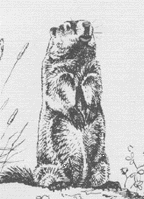
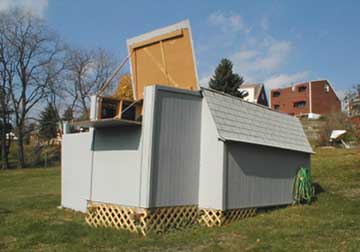
Below, you will find photos of the construction of BWO.
I named my observatory after the large groundhog that lives under it. BWO originally started out in life in June of 1991 as a typical 'barn' style garden shed.
Even though I live only about 8 miles from downtown Pittsburgh, my backyard is fairly dark, and when we first moved in, you could still see a smudge of Milky-Way directly overhead on nights of excellent transparency.
(of course after living there for over 30 years, its now a rare night when you can see more than three stars in the Little Dipper).
I began storing my 8" dobsonian reflector, eyepieces, table and chair, and other misc visual astronomy accessories inside the shed and would observe out in the yard. Later, I added a small stone patio and
partly enclosed it to block out the glare from a few nearby lights. It was a nice beginning, and I accomplished a lot of sketching from the backyard.
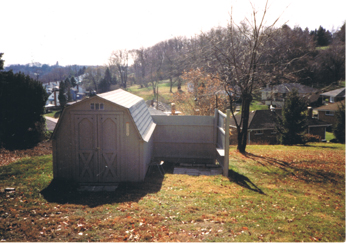
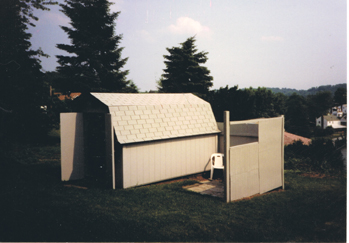
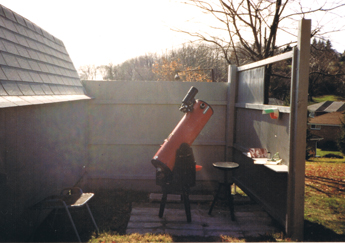
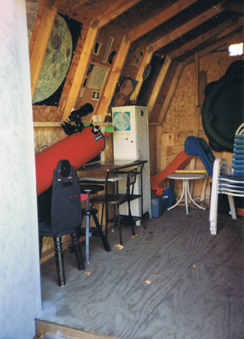
In the Summer of 1997, I added a small PVC-concrete pier for a motorized 8" SCT (Celestron Ultima) that I had acquired.
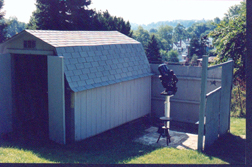
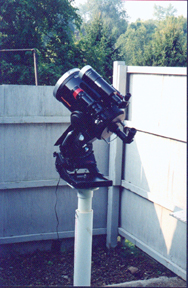
While the pier helped increase my observing, it was still inconvenient to have to setup and takedown the SCT every night.
I wanted something that would let me leave everything setup and ready.
I meant to take a few photos of the bare walls, but I forgot. Here is a little tour of the finished interior.
Finally, here are a couple of shots of my second used 8" SCT, (Celestron Super C8+) which is located outside the shed mounted on the PVC pier inside the fenced patio.
Update - I sold my Celestron Super C8+ pictured above and purchased a Coronado PST. In addition to piggybacking it on my Ultima C8 (using 50mm finder dovetail rings),
I also mount it outside on the pier for late afternoon observing when the shed walls are blocking the Sun.
Update - November 2009, after 10 years of operation, I finally decided to install a hand crank winch for opening and closing the flip roof. Works very nice!
Due to the 2020 Pandemic, not planning on attending any starparties this year. This was the Year of stay-at-home backyard 'starparty' at Big WoodChuck Observatory!
Permanently mounted observatory telescope: (8" Meade LX200GPS SCT with a StellaCam-3 analog videocam. Piggybacked 80mm University Optics Refractor. 50mm Orion Refractor & Stellacam-II)
Hope you enjoyed the visit. Come again soon!
I began to toy with ideas of modifying the barn shed.
As visions of roll-off roofs (and roofs falling off) began to fly around my head, my wife came up with the perfect solution:
"Add on to the back of the shed, and have it's roof open up".
As the back of the barn shed faced south, the idea would work well for Solar and Lunar/Planetary observing, and give me some limited access to Deep-Sky when objects were close to the meridian.
But as you can see, my wife was right!!! And it all turned out good.
The 8" SCT was now permanently mounted inside the new addition where I could sit comfortably and not be completely exposed to the night air.
And I still could carry the 8" Dob outside to the patio for observing objects blocked by the shed walls and roof.
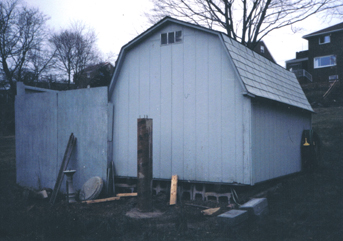
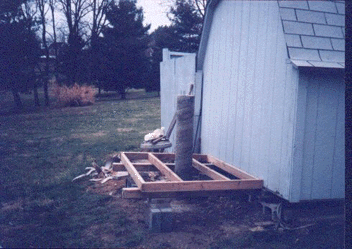
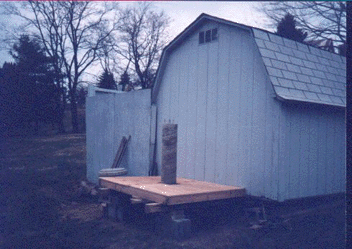
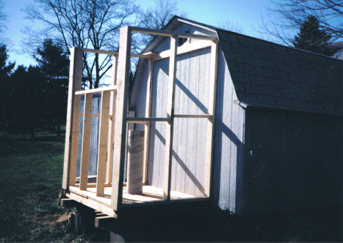
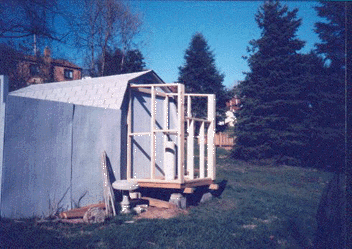
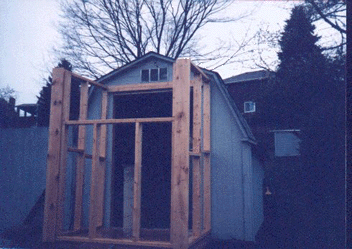
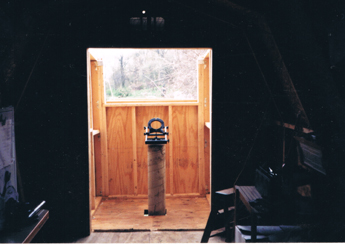
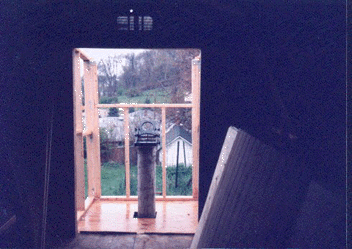
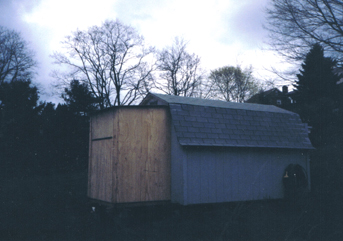
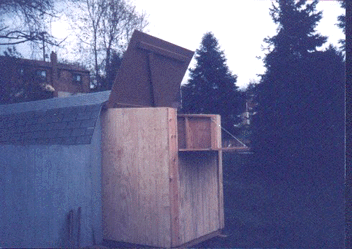
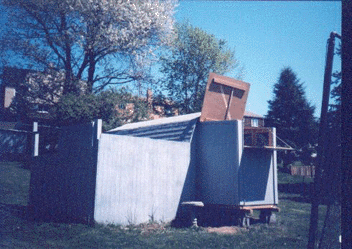
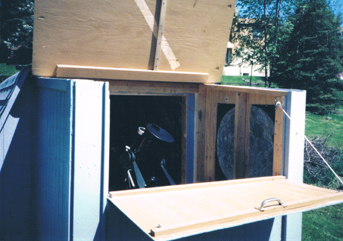
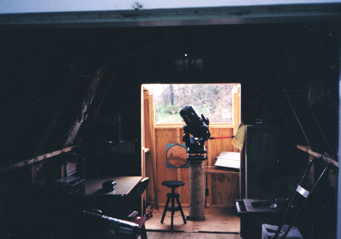
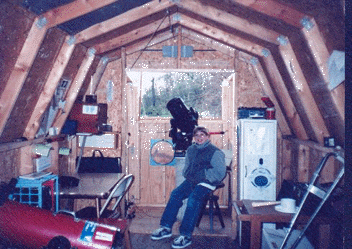
After visiting several friend's observatories in the summer of 2003 and noticing how nice their interiors looked,
I decided to remodel my little 'shed' observatory.
First, I instaled insulation foamboard to the walls and roof. Then I added a plastic vapor barrier. I recycled some old plywood that I had into an interior dividing wall.
This gives me an 8' x 8' 'finished inside' observatory
while still leaving a 4' x 8' section for the yard tools and lawnmower.
Then up went the panneling and trim, with new carpet being last.
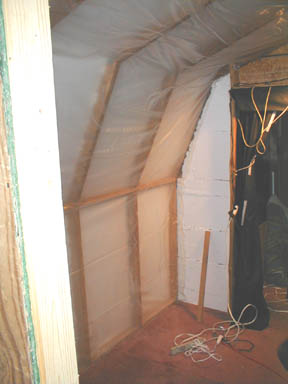
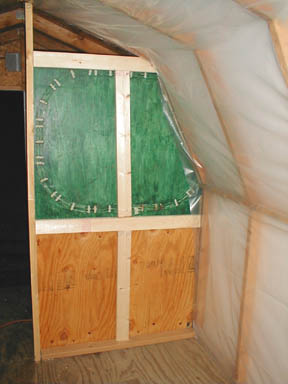
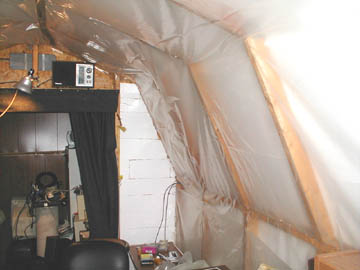
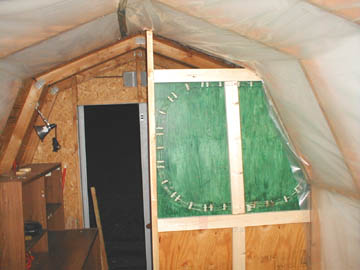
In addition to housing my video monitors, computers, and telescope accessories, I also moved my short-wave listening post out to the shed. I can tune in the BBC,
or listen to Radio Canada, Japan, Taiwan, and many other international broadcasters while doing a little video observing or imaging. (use a RS DX302 & DX380).
The curtain across the entrance helps keep out dust from the unfinished section. During the winter, I can pull close that curtain, and the curtain that separates
the main telescope annex from the observer station and use a small propane heater, to bring the indoor temperature up to a comfortable level, and not affect the scope.
I also ran electricity down to the observatory for my desktop computer and monitors for the videoastronomy cameras that I now use for observing.
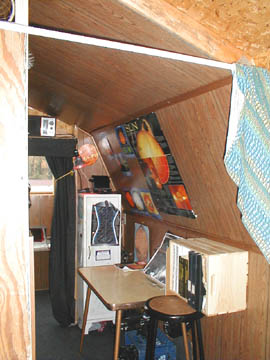
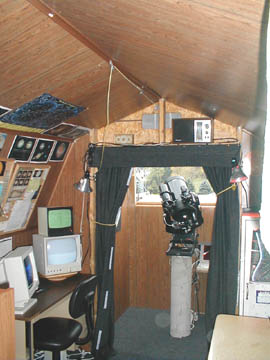
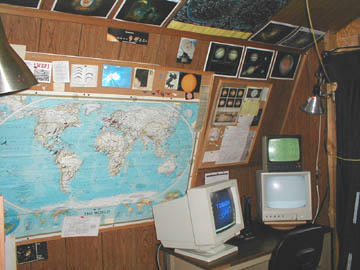
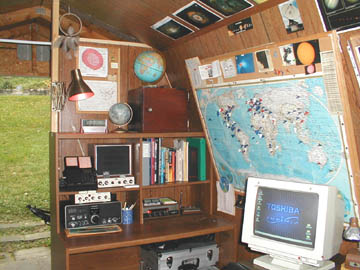
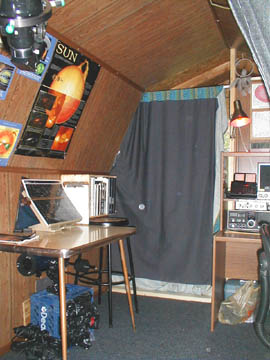
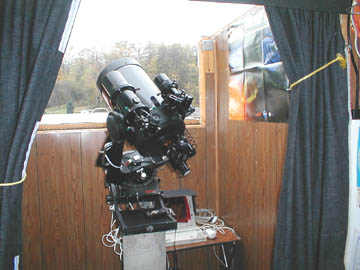
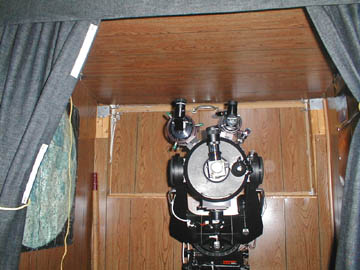
I've run the scope controller cables and video feed thru the shed wall, and once I manually slew the scope to a desired object, I can operate and observe, via video, from the inside.
This allows me to observe other sections of the sky not available to the south facing annex scope. (or solar observe with one scope in white-light, and the other in H-alpha!).
As both scopes are 8" SCT's, I can switch accessories back and forth as needed.
(You radio fans may notice the base of my 30' "Ringo" vertical antenna. I also have a 50' longwire antenna, which is out of the picture).
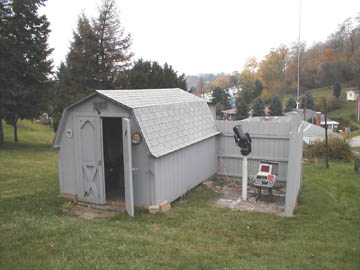
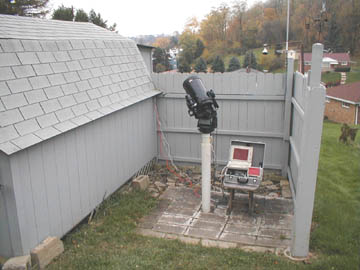
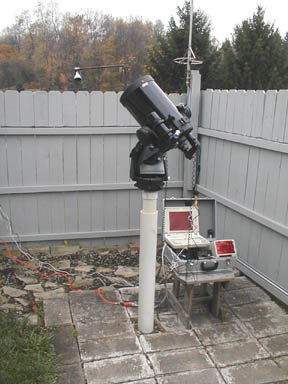
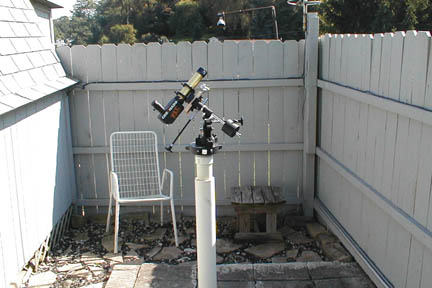
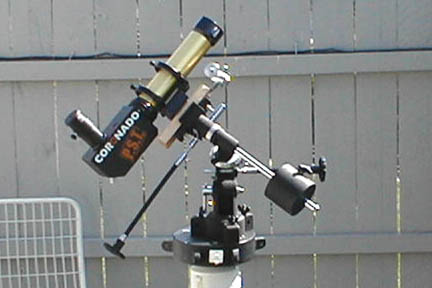
An added bonus is that I can open the roof up just a little bit or all the way.
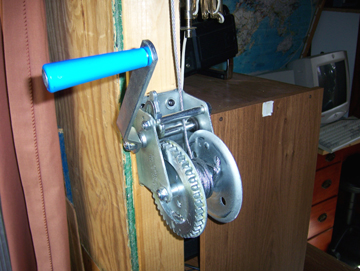
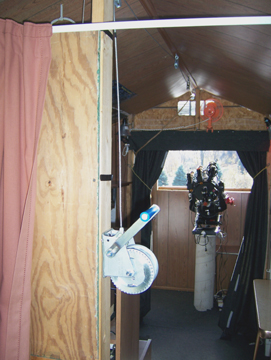
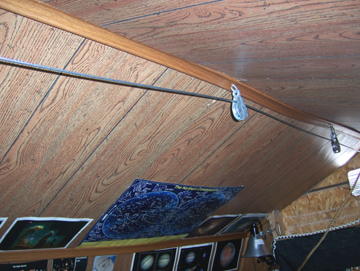
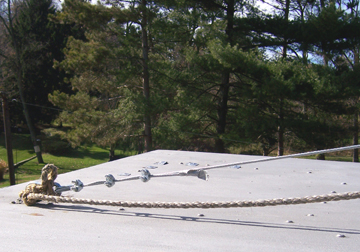
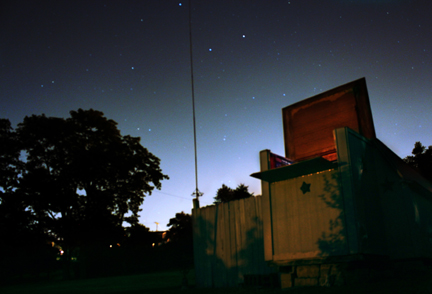
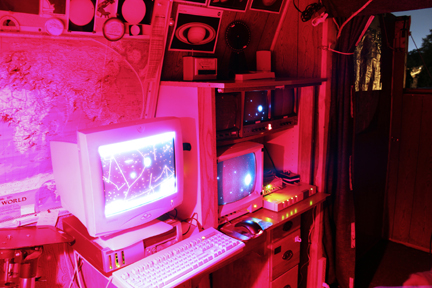
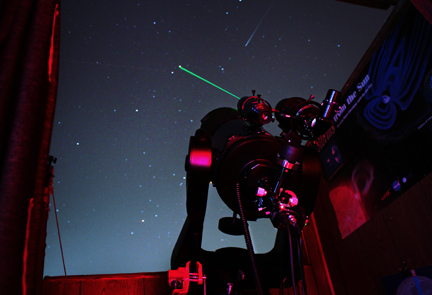
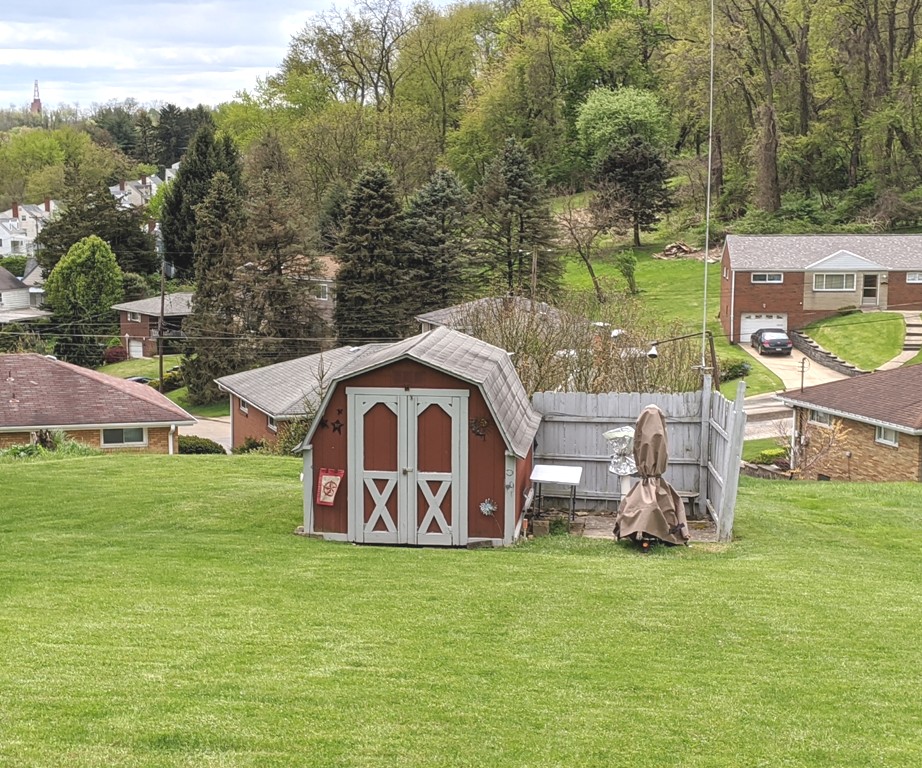
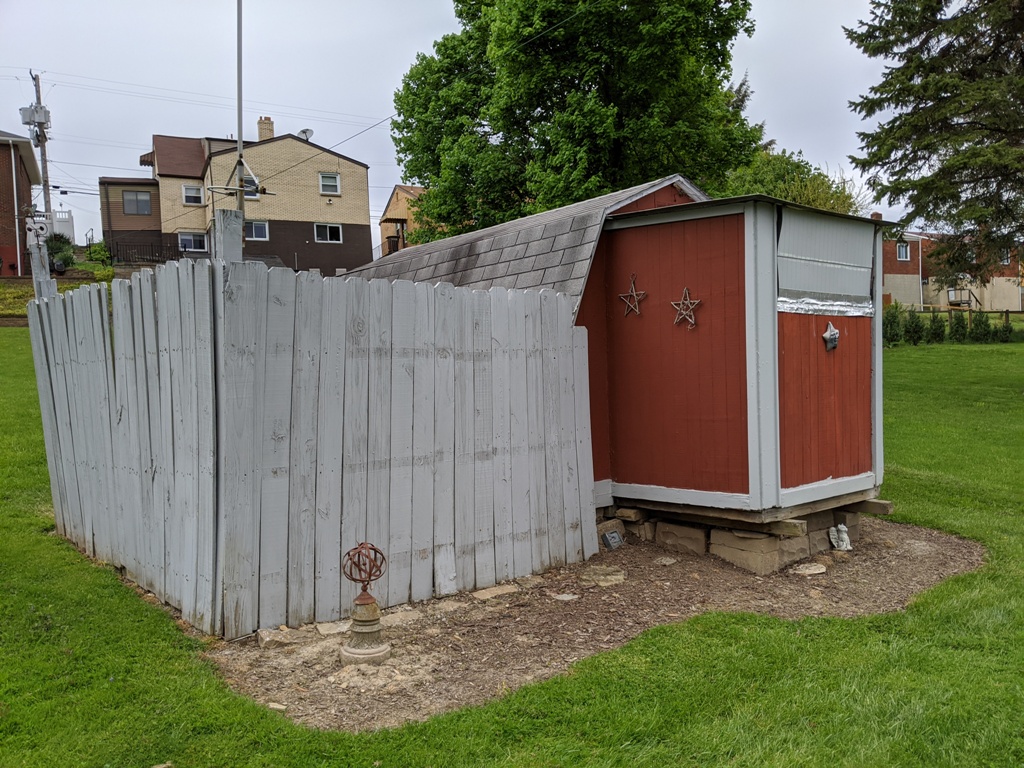
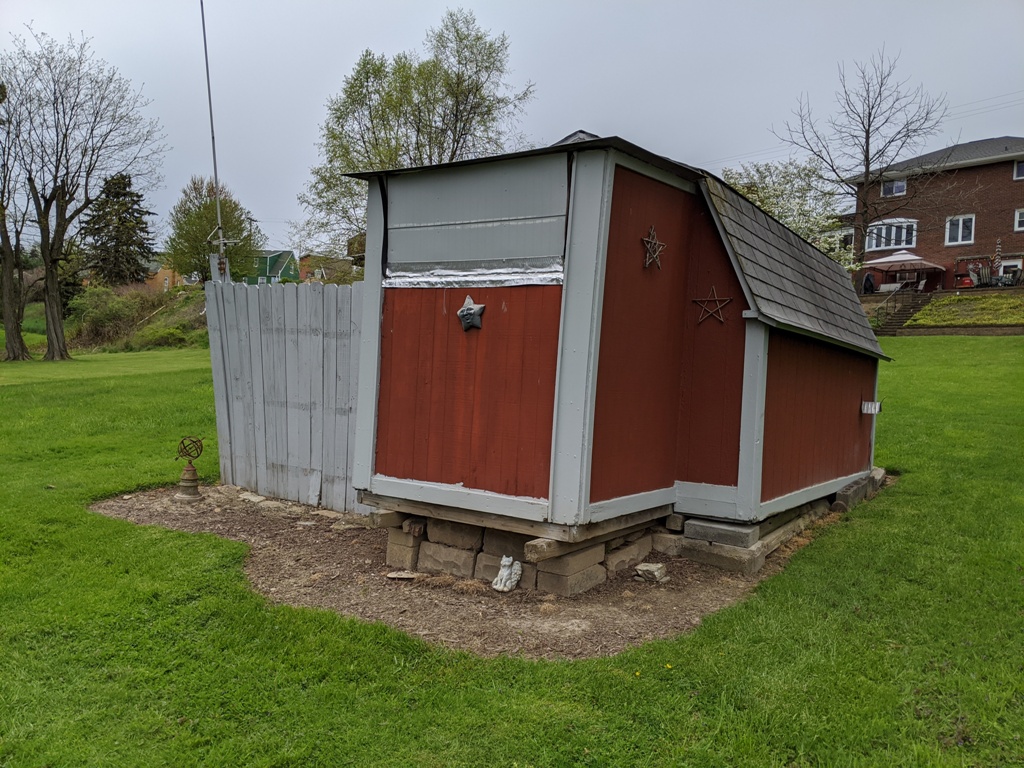
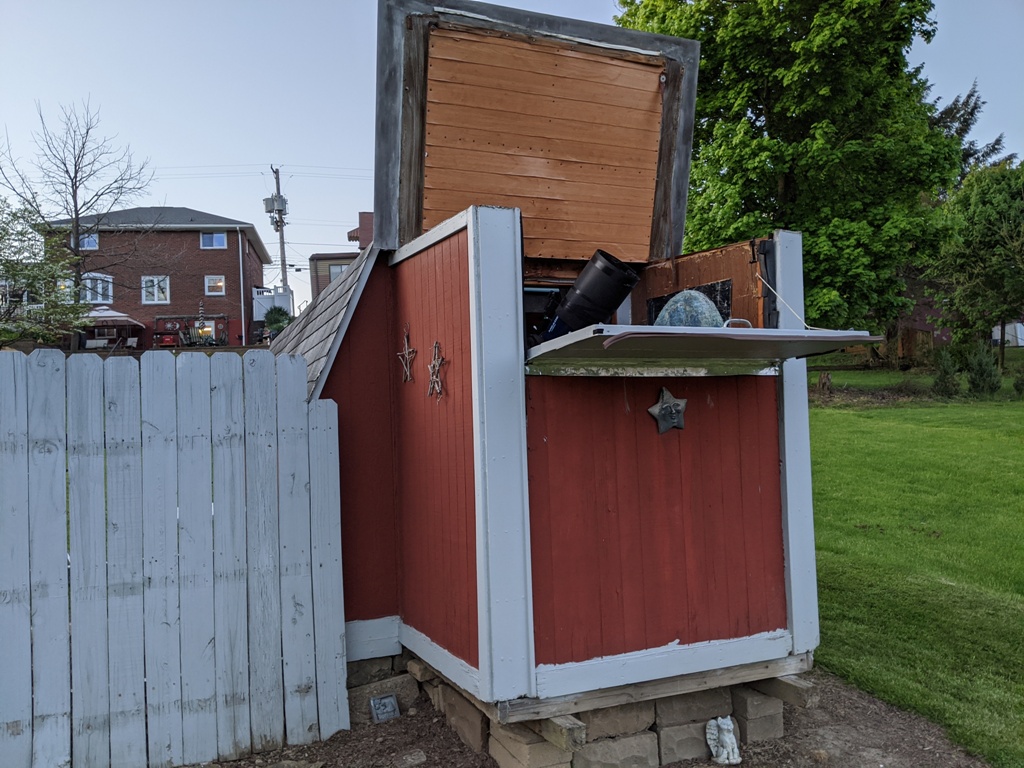
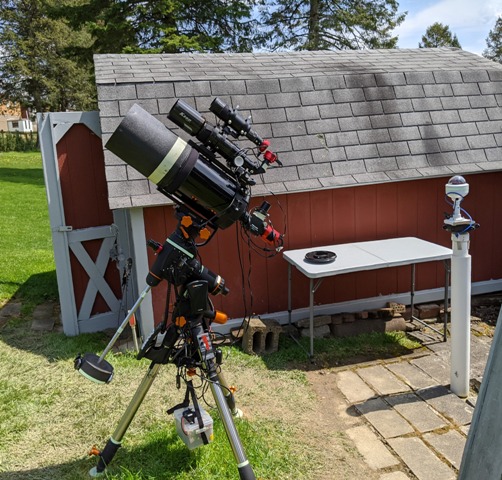
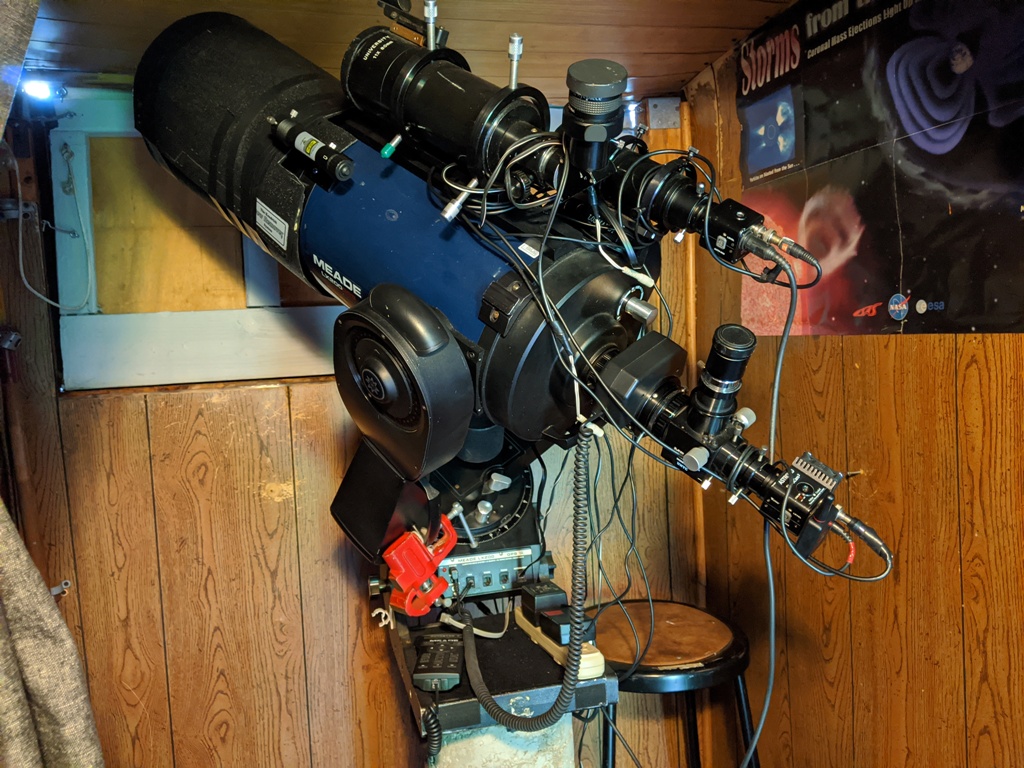
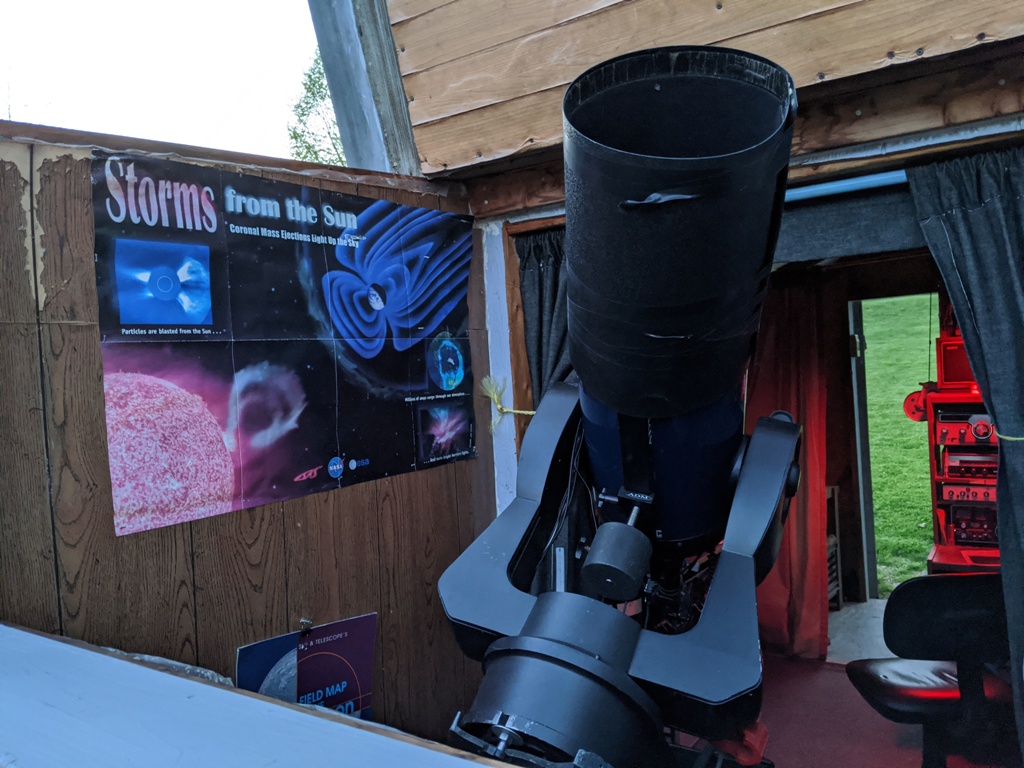
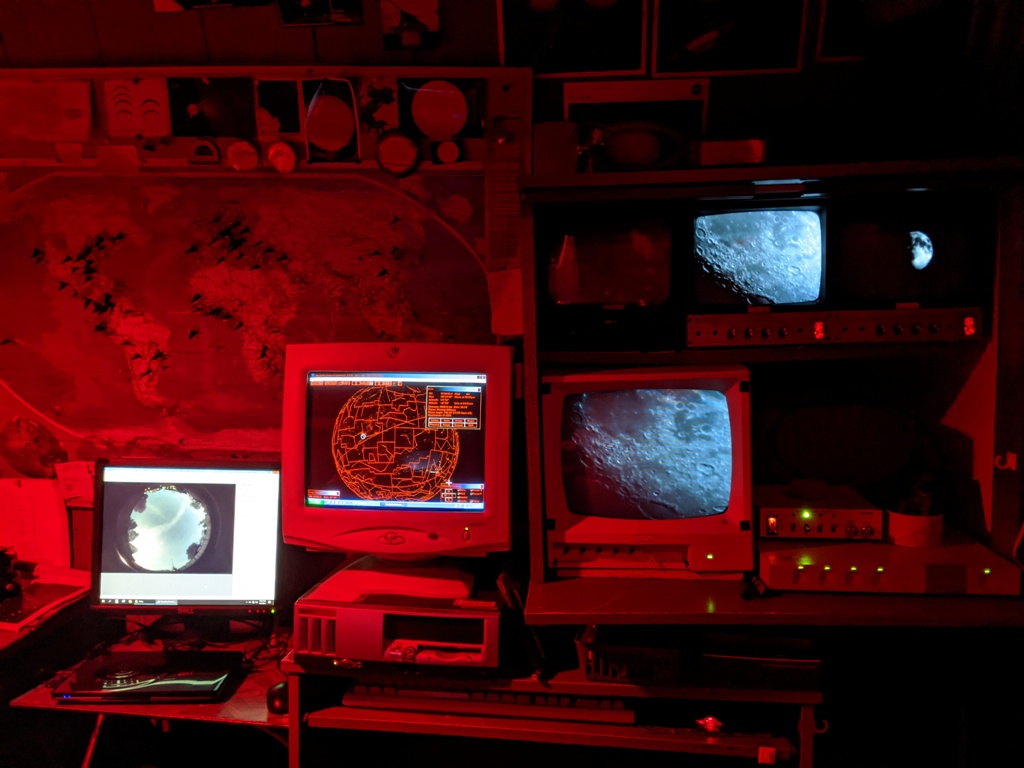
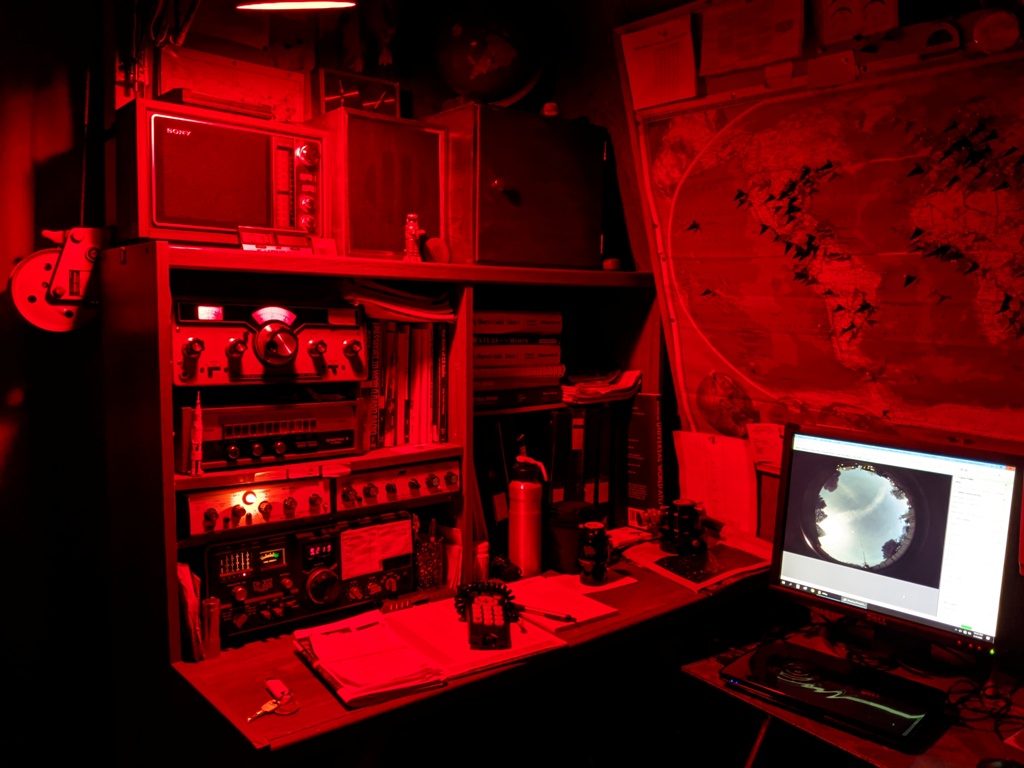
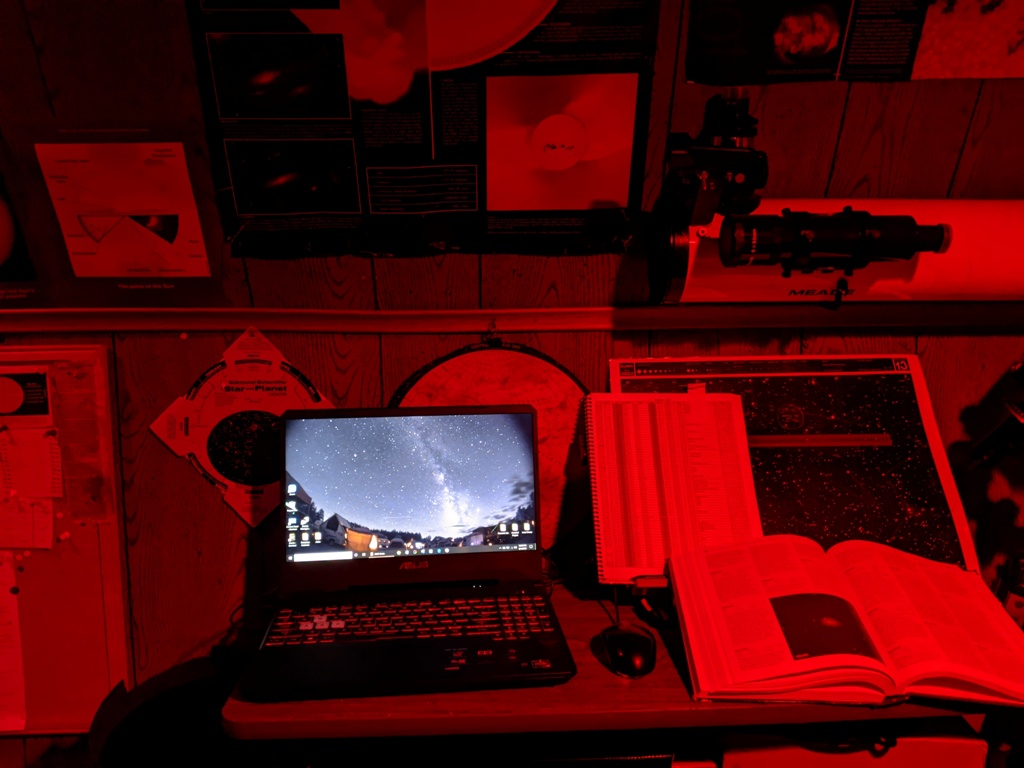
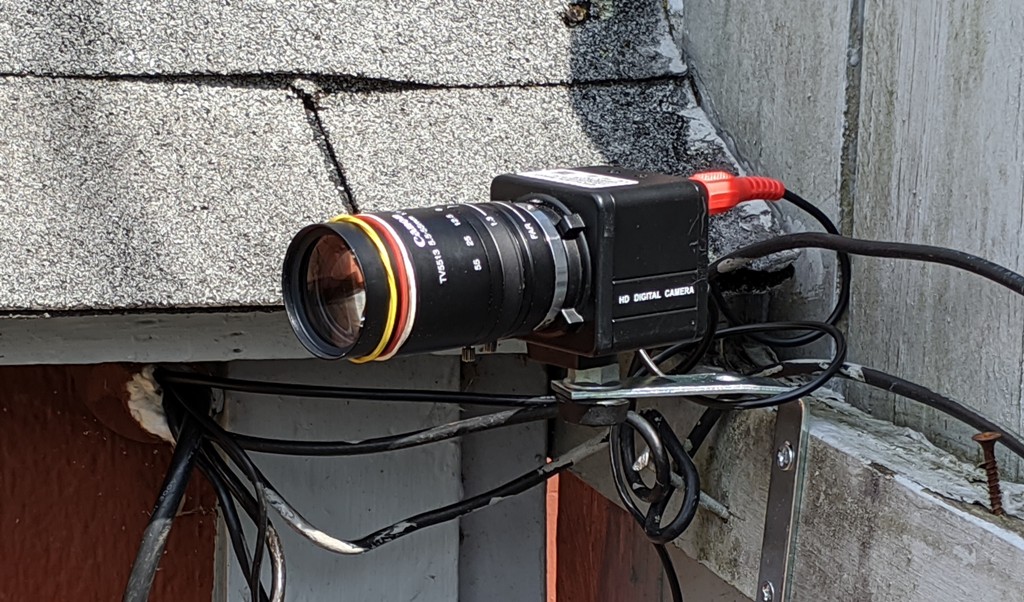
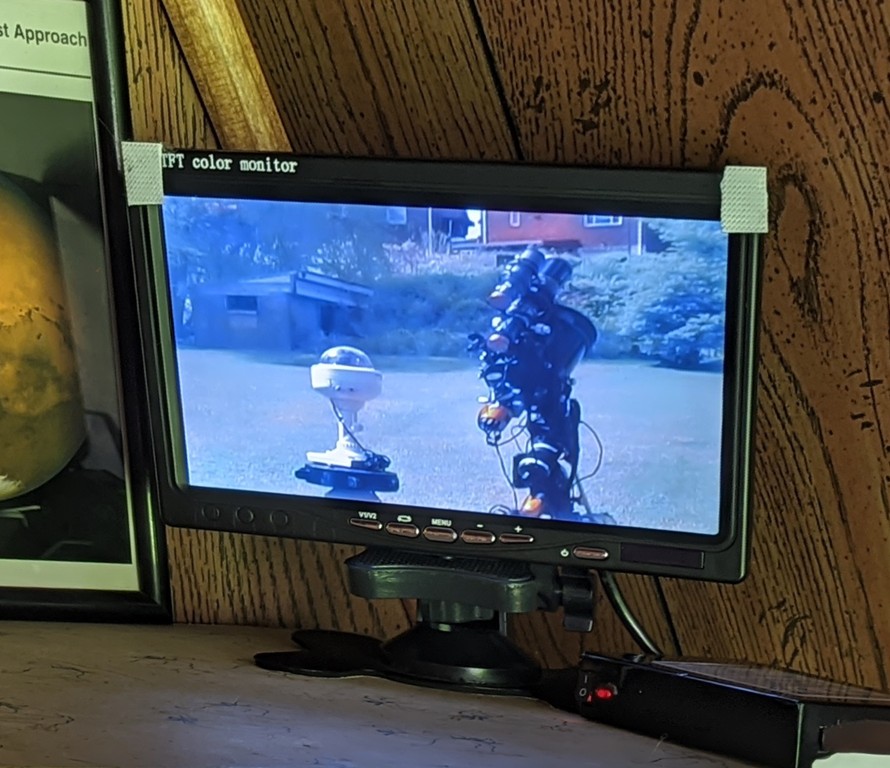
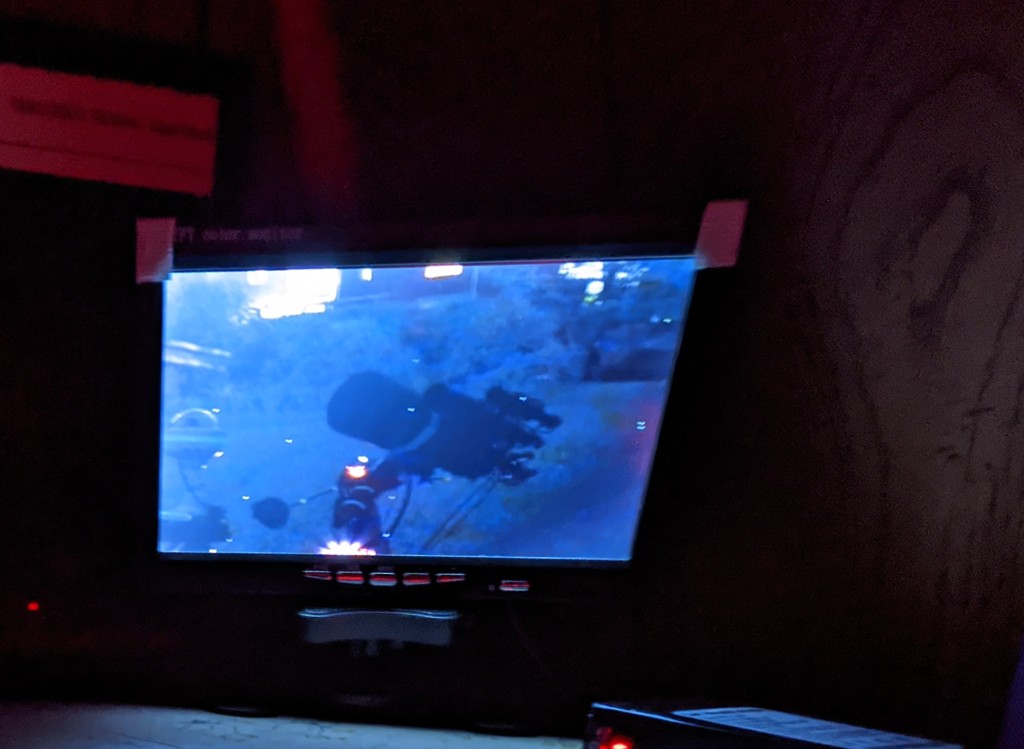
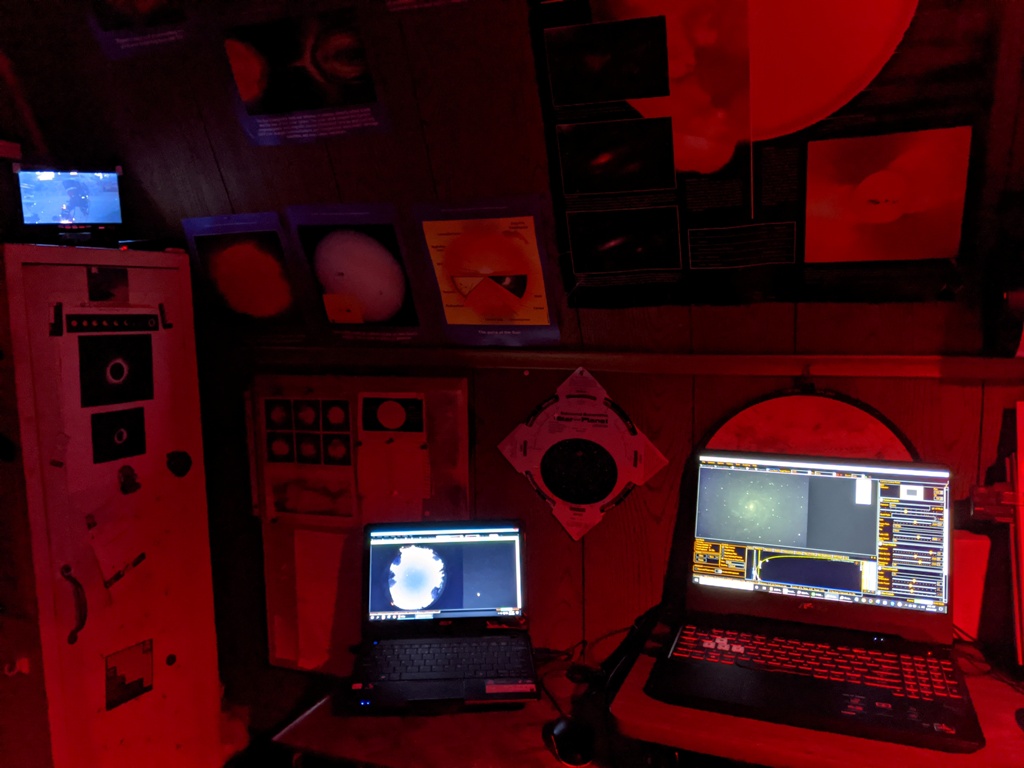
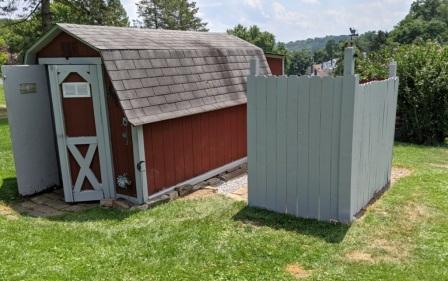
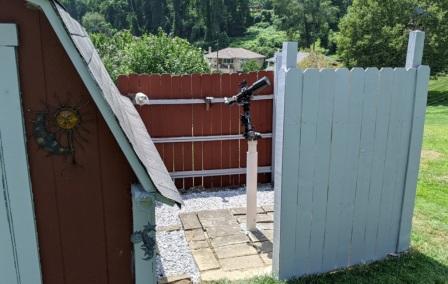
Travel telescope: (8" Celestron SCT optical tube on a CGem mount using a ZWO ASI294MC camera. Piggybacked 80mm Kson Refractor & ASI290MC,
with a 60mm Antares refractor guidescope & ASI120MC)
DIY allsky cam: (ZWO ASI224MC with a 1/3" 1.25mm IR MP fisheye lens)
Revolution R2 camera & Canon 5-55mm widefield lens
Larry McHenry, Pittsburgh, PA. USA
Astronomical Webportal: